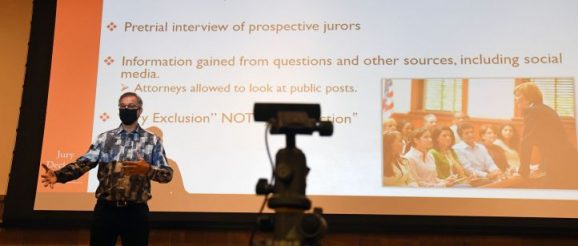Teaching and learning innovation requires supporting (and incentivizing) instructors – EdScoop

The coronavirus pandemic forced universities to invest resources and time into innovating in teaching and learning, but now institutions are researching how to keep the momentum going.
Presenters at Duke University’s Pandemic Pedagogy Symposium on Wednesday showcased research showing instructor communication and effort was key in moving teaching and learning forward in the early stages of the pandemic. Communities, offices or programs to support instructors and academic innovation initiative show promise in building sustainable change, presenters said.
For example, Stanford University researchers found an “exponential increase” in discussion groups — like Slack messaging channels — conferences and summits for teaching and learning emergency remote instruction, said Lisa Anderson, a senior project manager with Stanford Digital Education.
“We learned of many new programs and projects that were led by staff, often in totally new areas of work, and in cross functional groups — many of whom never had reason to interact with one another before the pandemic that are now a part of very rich conversations that are ongoing,” Anderson said during the event.
‘Forced innovation’
The emergency remote period, for the purpose of Stanford’s study, ran from March 2020 to fall 2021. The California university launched a digital education office in October 2021, designed to improve access to education though online courses, building on changes made during the pandemic. Anderson said research on pandemic-era learning found that teaching and learning communities that been previously scrapped were revitalized during emergency remote instruction — like the online Stanford Teaching Commons.
But so much “forced innovation” also generated backlash, Anderson said, with some instructors and staff looking for relief from the added stress of the pandemic and its rapid shift to online learning.
“We’ve heard reference to what we’re calling a ‘pendulum swing,’” she said. “In other words, the reaction to so much innovation happening so fast is to — very simply and understandably — want to go back to what you know. Faculty are calling The Before Times. Others are on the other side of things, so they’re energized by what they discovered through the disruption. They’re excited to keep innovating and trying new things.”
Continued experimentation
At Duke University, a grant program for academic innovation post-pandemic helped carry that momentum forward, Innovation Center Director Shawn Miller said in a virtual presentation. By asking for proposals, the program was designed to incentivize staff and instructors to pursue new approaches or research some of the changes during the pandemic.
“We learned that faculty and staff have ideas and there are some that just want everything to go back to the way it was, but there are others who wanted to pick up and do something different along the way and we felt like we could steward that into into happening by incentivizing continued experimentation and digital learning,” Miller said. “Without our funding and staff support that might not have happened.”
Every school at Duke was represented in the submission process, Miller said. The first round of funding, announced in May 2021, awarded money to 29 projects, including virtual escape rooms and open educational resources.
“It doesn’t take sweeping department or school change to have a positive impact on faculty and students.”
“Our total was around $103k for 29 projects, which maybe sounds like a lot to some people, but that is not comparable for some massive RFPs. Even edtech RFPs are often quite a bit more than that,” Miller said. “It doesn’t take sweeping department or school change to have a positive impact on faculty and students.”
It’s too early to talk about results from these projects, Miller said, though recipients are preparing research, some for academic publication.
“Some of the projects will help inform how far we should take things in the future, because there’s discussion about more hybrid, Hy-Flex type classes,” Miller said. “My personal feeling is no one’s doing that particularly well yet, and maybe we do or don’t want to do that well, but we need more data.”
Students are showing interest in keeping online options around, especially older, nontraditional students colleges are seeking out to boost enrollment. Offering professional development on emerging technology and teaching in hybrid spaces was a top priority outlined in Educause’s 2022 teaching and learning Horizon Report.
